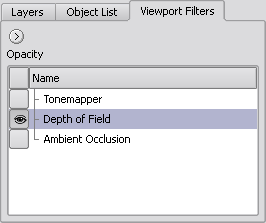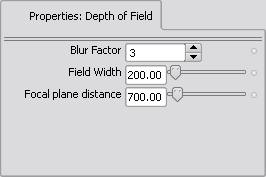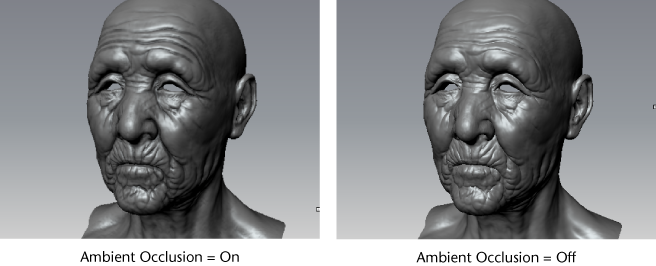Show in Contents

Add to Favorites

Home: Autodesk Mudbox Online Help

Create and apply materials

Presentation

Using CgFX-based materials

Apply visual effects
You can apply visual effects
to the 3D View using the Viewport
Filters. These filters can enhance your sculptures and
assigned materials and aid in recreating an environment that mimics
how they’ll be rendered in another application. When turned on,
these filters appear as a post-processing effect that is applied
in real-time to everything displayed in the 3D
View.
You can turn on the following
filter effects to modify how the model appears in the 3D
View (provided your computer graphics card supports these
Cg-based effects):
- Tonemapper
- Depth of Field
- Ambient Occlusion
NoteAll of the Viewport
Filters rely on features provided by more advanced graphics cards.
If the display of any viewport effect is not as expected, compare
your hardware’s specifications to the hardware listed at
http://www.autodesk.com/mudbox-hardware.
Using the Tonemapper filter
The Tonemapper filter
works by remapping the color values for what displays in the 3D
View. Adjust the Tonemapper properties
to compress, expand, or shift the tonal range of the rendered scene.
You can also simulate
interesting glow effects using the Glare property.
This feature is useful when you use HDRI images for environment
and material maps and you need to evaluate the model with an overall
level of brightness or contrast applied.
- Turn on the Tonemapper filter
by clicking the Viewport Filters tab, then click
the box to the left of the Tonemapper item
name so that the eye icon appears (or click on the name itself).
- Display the Tonemapper properties
by clicking the Tonemapper name.
The properties appear
in the Properties window.
Using the Depth of Field
filter
The Depth
of Field filter lets you simulate the depth of field
effects inherent to optical camera lenses in real time. That is,
a specific near and far range from the camera can be defined where
items within the specified range appear in focus and items outside
the specified range appear out of focus, or blurred.
Depth of field helps
to reduce the overall digital sharpness that is inherent to computer
graphics and makes a model appear with characteristics inherent to
an optical camera lens.
- Turn on the Depth of Field filter
by clicking the Viewport Filters tab, then click
the box to the left of the Depth of Field name
(or on the name itself) so that the eye icon appears.
- Display the Depth of Field properties
by clicking the Depth of Field name.
The properties appear
in the Properties window.
NoteTurning on the grid
can help when setting the depth of field.
Using the Ambient Occlusion
filter
The Ambient
Occlusion filter lets you simulate the occlusion effects
that darken cracks, crevices, corners and points of contact on rendered
surfaces.
This filter aids in evaluating
the overall 3D form of a model in fine detail areas, much like moving
a light across the front of the surface helps to evaluate the surface
highlights and subtleties of its overall form.
- Turn on the Ambient Occlusion filter
by clicking the Viewport Filters tab, then
click the box to the left of the Ambient Occlusion name
so that the eye icon appears (or click on the name itself).
NoteIf the following
message appears:
Ambient Occlusion process
took <n> seconds. Filtering of 32 bit floating point textures
may not be supported by your hardware. Disabling texture filtering
in the preferences may improve performance. This indicates
that your hardware and graphics may not be supported for running
Mudbox. Save your work, turn off the
Use Texture Filtering option
in
Render section of the Preferences
window, then restart Mudbox and load your file again to see if the Ambient
Occlusion filter effect is improved. Compare your hardware’s specifications
to the hardware listed at
http://www.autodesk.com/mudbox-hardware.
- Display the Ambient Occlusion properties
by clicking the Ambient Occlusion name.
The properties appear
in the Properties window.
NoteThe Strength property
controls the intensity of the ambient occlusion effect.




